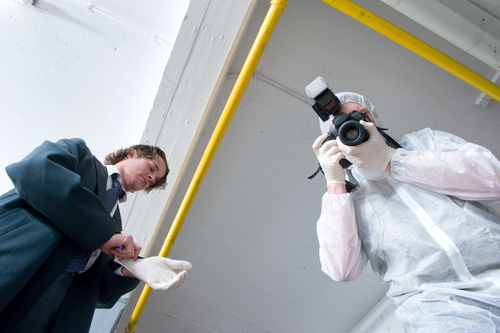Body of Evidence

Mike Silverman on the lessons to be learned from privatising key scientific services
The Biologist 61(4) p9
The modern discipline of forensic science began as the out-of-hours hobby of Cyril Cuthbert, a police sergeant at a London police station. Despite early setbacks, funding was eventually approved for a special laboratory, which opened at Hendon Police College in April 1935.
Staff included a pathologist, chemist, technician, clerk and cleaner. Cuthbert was police liaison officer. The group analysed blood, semen, poisons and explosives, and examined tool marks, firearms and ammunition. All new police constables were required to attend a course on forensic science. The 'Metlab' was expanded and moved to New Scotland Yard, then Holborn and finally Lambeth, where it remains.
The success of the Metlab led the Home Office to establish seven more forensic laboratories to provide services outside London, collectively known as the Home Office Forensic Science Service (HOFSS). In the late 1980s, it introduced a series of increasingly sensitive and discriminating DNA analysis techniques and established the world's first DNA database. The service increased in strength and was envied by all.
However, in February 1989 a Home Affairs Select Committee report found that the HOFSS was underfunded and that its staff was overworked and suffering from low morale. The Committee recommended that the HOFSS be expanded and proposed radical change in the way it was funded, with police forces paying on a job by job basis.
Consequently, in 1991, the HOFSS laboratories were restructured to form the Forensic Science Service (FSS). Not everyone agreed with the move. Overnight, a cost had been put on the use of forensic science in the criminal justice system, changing the relationship between the police and forensic scientists. There was an immediate loss of mutual trust and it created the rocky foundations of a forensic science market.
In December 1996, encouraged by the Home Office, the FSS took control of the Metlab, against the wishes of Metropolitan Police staff. The driving force behind this change was to create a national service independent of its police customers. In the rush to privatisation, the FSS went from agency to government owned company. The top heavy organisation, managed by forensic scientists, couldn't transform into the agile organisation required by the competitive marketplace, now populated with other commercial providers competing with the FSS for police contracts. The FSS was soon losing a reported £2m a month.
In December 2010, the Home Office announced the FSS was to close. The UK, once a world leader in forensic science, is now trailing behind Europe. The National DNA Database, once the envy of the world, is outmoded as the rest of Europe introduces the latest DNA technology.
The closure of FSS was expected to result in a bonanza of work worth £180m for the other providers in the UK forensic services market, but when the FSS shut its doors, the value had dropped to £80m. Falling crime, increased insourcing of forensic science by police forces and reduced forensic submissions had all contributed to the dramatic drop in market value.
In a shrinking market, where is the incentive for investment in novel forensic science research? Who will fund longer term development of new techniques and analyses? How are integrity, independence and transparency to be guaranteed in a commercial market? What happens when the shareholders discover that forensic science is not a profitable business?
England and Wales are now the only countries with a wholly privatised forensic science market, literally putting a price on justice. Not surprisingly, others, including Scotland, are not keen to follow. It may be that England might, again, be first in forensic science: the first country to have to outsource a whole section of its criminal justice system abroad.
And when that happens, I think we will all be losers: forensic scientists who have lost their jobs and a uniquely exciting career, the police, the CPS, the criminal justice system and forensic science as a whole. But the biggest losers will be the victims of both crime and miscarriages of justice.
Mike Silverman MSB began his career as a biologist with New Scotland Yard's Forensic Science Laboratory, specialising in blood pattern analysis, murder and sexual assault cases. He went on to manage CSI and forensic services for Kent Police and was the Home Office's first forensic science regulator.


